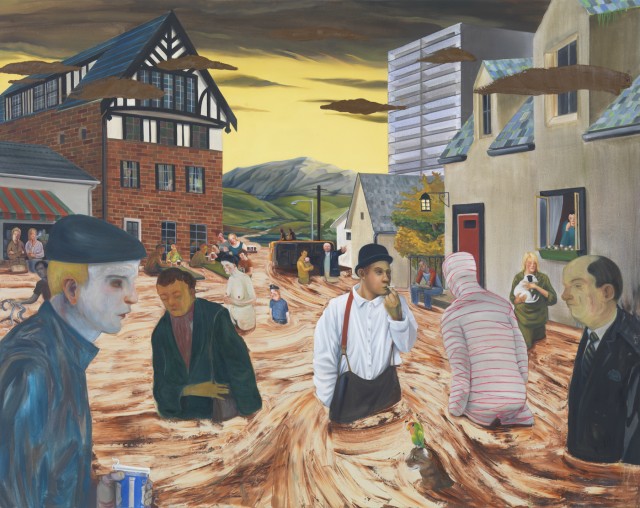
Nicole Eisenman, “Coping,” oil on canvas, 2008 (courtesy the artist; Galerie Barbara Weiss, Berlin; and Susanne Vielmetter Los Angeles Projects. Photo: © Carnegie Museum of Art)
New Museum of Contemporary Art / Anton Kern Gallery
235 Bowery at Prince St. / 532 West 20th St. between Tenth & Eleventh Aves.
Through Sunday, June 26, $16 / through Saturday, June 25, free, 10:00 am – 6:00 pm
212-219-1222 / 212-367-9663
www.newmuseum.org
www.antonkerngallery.com3
In her foreword to the catalog for Nicole Eisenman’s first New York museum survey, New Museum director Lisa Phillips writes, “Nicole Eisenman is one of the most important painters of her generation and a vanguard voice in defining what figurative painting is today.” Bold words indeed, but “Nicole Eisenmann: Al-ugh-ories,” running at the New Museum through June 26, and “Nicole Eisenman: Magnificent Delusion,” continuing at Anton Kern Gallery in Chelsea through June 25, go a long way toward supporting that claim. The Scarsdale-raised, Brooklyn-based painter, sculptor, and installation artist has been part of the New York City scene since the 1990s; in fact, in 1994 she was included in the New Museum’s “Bad Girls” show, along with Matt Groening, Guerrilla Girls, Carrie Mae Weems, Lynda Barry, and others. Eisenman’s canvases mix art history and autobiography to tell intriguing stories that demand extended viewing not only to revel in her remarkable skill with color and a brush but to let the allegorical narratives unfold before you. At the New Museum show, pieces reference Philip Guston and Paul Gauguin, Giorgio di Chirico and Edvard Munch, Edouard Manet and Pieter Bruegel, Hans Holbein and Pablo Picasso and others, in a style that evokes classic paintings as well as German Expressionism and underground comics and zines.
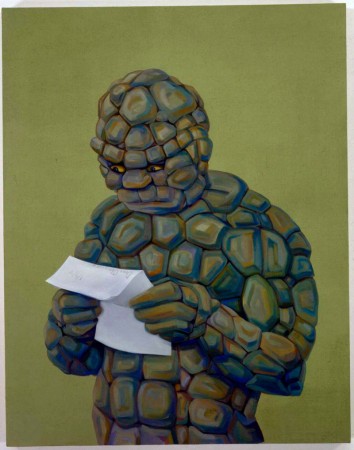
Nicole Eisenman, “From Success to Obscurity,” oil on canvas, 2004 (Hall Collection; photo courtesy New Museum)
In “From Success to Obscurity,” a character based on the Thing from the Fantastic Four is reading a letter that is addressed, “Dear Obscurity.” In “Commerce Feeds Creativity,” a shirtless man in a bowler hat holds out a spoon to a drooling, wounded woman tied up with wire so her bare breasts are squeezed into painful positions, the background unfinished, as if Eisenman is being forced to complete her work at the behest of a patriarchal capitalist market. In “Biergarten at Night,” a motley crew of men and women, many coupled, are drinking and smoking in the midst of a dark forest; near the center, a skeleton and a genderless person embrace like the man and woman in Munch’s “The Kiss,” while an oddly placed wire with halo-inducing lightbulbs droops across the middle of the canvas. Eisenman depicts herself at work in “Progress: Real and Imagined,” her studio adrift at sea, the artist hunched over in the center, drawing with a quill pen, an engaging counterpart to her sculptural installation of a table in her studio, in which the artist’s foot is hanging upside down from a crosslike object, most of her body in a bronze container.
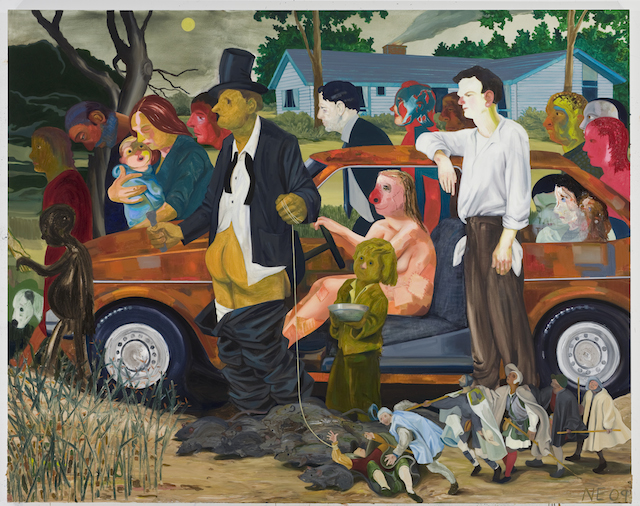
“The Triumph of Poverty,” oil on canvas, 2009 (collection Bobbi and Stephen Rosenthal, New York; photo courtesy New Museum)
Eisenman also imbues her work with sociopolitical statements both overt and subtle. In “The Triumph of Poverty,” a group of downtrodden, zombielike people are gathered in and around a car with no doors or windows, fire peeking out of a chimney in the background, all looking off to the left, not exactly expecting that prosperity awaits. Among them are a man in a tuxedo whose pants have fallen down, revealing that his buttocks are where his genitals should be, making him an ass-backward leader; a child holding out a bowl, as if Oliver asking for more food in Oliver Twist; and a small black child with an extended belly, being led by an ominous white hand. In “Tea Party,” a bedraggled and defeated Uncle Sam slumps in a chair in an underground bunker stocked with gold bars, water, and canned food; meanwhile, a barefoot, longhaired man sleeps quietly, clutching his beloved rifle, while two other men are building an explosive device. The pièce de résistance is 2008’s “Coping,” in which a strange cast of characters wade through a thick river of feces in a European town in which Eisenman brings together the past and the present with a bevy of wonderful details, from a street-vendor coffee cup to lush green hills, from an overturned car to a waitress serving trays of beer, from clouds of shit to a green parrot sitting atop a cat’s head, from a woman clutching her dog to a mummy walking away. (The parrot and mummy show up in other works as well.) In the middle of it all, a naked woman, perhaps the artist herself, is wondering what comes next. It’s a glorious tour de force that shows much of what Eisenman has been working on the past few decades.

Nicole Eisenman show at Anton Kern takes direct aim at the viewer (photo courtesy Anton Kern Gallery)
In a catalog interview with New Museum artistic director Massimiliano Gioni and assistant curator Helga Christofferson, Eisenman notes, “I like the idea of documenting, of saving something for a future time. It’s a hopeful act. I also love this fucked-up city.” You can get a glimpse of what comes next, of the future, in her thrilling show at Anton Kern, featuring a small collection of spectacular paintings from 2015-16, many of which deal with communication in the modern world; a wall of playful drawings and watercolors from 1995 to the present; and another studio-based sculpture. In “Subway 2,” a G train is approaching as a man in the foreground looks down at his cell phone, a woman’s foot extends ever-so-slightly onto the yellow line at the edge of the platform, and straphangers in the background turn ghostly the farther away they are; Eisenman globs thicker, abstract splotches of paint on the closer tracks while making gorgeous use of color, from the blue on the man’s coat to the green stanchions to the yellow safety line and rainbow stairs in the distance. In “Weeks on the Train,” Eisenman depicts her friend, writer and performer Laurie Weeks, on a commuter train, working on her laptop, a cat in a carrier next to her, a German Expressionist man asleep in the row in front of her, next to a Guston-like big-eyed character peering out the window.

Nicole Eisenman, “Subway 2,” oil on canvas, 2016 (photo courtesy Anton Kern Gallery)
In “TM and Lee,” a pair of women relax in a landscape simultaneously referencing a beach and fertile croplands; one woman holds her knee, artlessly revealing her crotch, listening to a larger woman play a guitar. In “Long Distance,” another relaxed couple chat over the internet, their bodies in unusual positions that are at first hard to decipher. In “Morning Studio,” two lovers are on a futon, one of them looking possessively at the viewer; in the foreground is a can of tuna being used as an ashtray, while in the background is a projection of the generic Apple desktop galaxy next to a window revealing the blue sky, contrasting technology and reality. The show is also very much about the act of seeing, with eyes being a central repeated image. In “Droid,” an android’s left eye resembles an egg. In “Subway 2” and “Weeks on the Train,” oversized eyes demand attention. And in “Shooter 1” and “Shooter 2,” guns are aimed right at the viewer, the barrel of the gun serving as the shooters’ right eyes, powerful statements in lieu of the intense fight over gun control in the United States. Meanwhile, in the watercolor and graphite drawing “Cap’n ’Merica,” the sad superhero has given up, hitting the road like a penniless drifter. Indeed, the shows at the New Museum and Anton Kern firmly establish that Eisenman is one of the most important, and finest, painters of her generation.
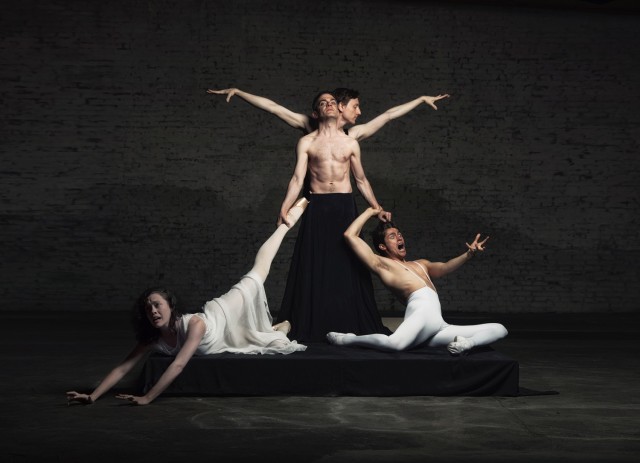
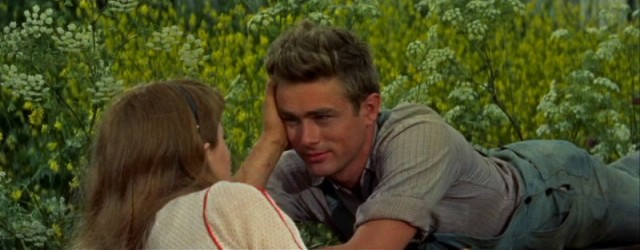
 “I guess there’s just a certain amount of good and bad you get from your parents and I just got the bad,” Cal (James Dean) says in Elia Kazan’s cinematic adaptation of part of John Steinbeck’s 1952 novel, East of Eden, a modern retelling of the biblical Cain and Abel story. In his first starring role, Dean received a posthumous Oscar nomination for his moody, angst-ridden performance as Cal Trask, a troubled young man who discovers that the mother (Best Supporting Actress winner Jo Van Fleet) he thought was dead is actually alive and well and running a successful house of prostitution nearby. Cal tries to win his father’s (Raymond Massey as Adam Trask) love and acceptance any way he can, including helping him develop his grand plan to transport lettuce from their farm via refrigerated railway cars, but his father seems to always favor his other son, Aron (Richard Davalos). Aron, meanwhile, is in love with Abra (Julie Harris), a sweet young woman who takes a serious interest in Cal and desperately wants him to succeed. But the well-meaning though misunderstood Cal does things his own way, which gets him in trouble with his father and brother, the mother who wants nothing to do with him, the sheriff (Burl Ives), and just about everyone else he comes in contact with. Set in Monterey and Salinas, East of Eden begins with a grand overture by Leonard Rosenman, announcing the film is going to be a major undertaking, and it lives up to its billing. Dean is masterful as Cal, peppering Paul Osborn’s script with powerful improvisational moments as he expresses his frustration with his family and life in general. His inner turmoil threatens to explode in both word and gesture as he just seeks to be loved. Dean would follow up East of Eden with seminal roles in Rebel Without a Cause and Giant before his death in a car crash in 1955 at the age of twenty-four, leaving behind a remarkable legacy that has influenced generations of actors ever since. East of Eden is screening June 27 at the Bryant Park Summer Film Festival, which continues Monday nights through August 22 with such other classic flicks as Preston Sturges’s The Palm Beach Story, Richard Donner’s The Omen, and Clint Eastwood’s High Plains Drifter.
“I guess there’s just a certain amount of good and bad you get from your parents and I just got the bad,” Cal (James Dean) says in Elia Kazan’s cinematic adaptation of part of John Steinbeck’s 1952 novel, East of Eden, a modern retelling of the biblical Cain and Abel story. In his first starring role, Dean received a posthumous Oscar nomination for his moody, angst-ridden performance as Cal Trask, a troubled young man who discovers that the mother (Best Supporting Actress winner Jo Van Fleet) he thought was dead is actually alive and well and running a successful house of prostitution nearby. Cal tries to win his father’s (Raymond Massey as Adam Trask) love and acceptance any way he can, including helping him develop his grand plan to transport lettuce from their farm via refrigerated railway cars, but his father seems to always favor his other son, Aron (Richard Davalos). Aron, meanwhile, is in love with Abra (Julie Harris), a sweet young woman who takes a serious interest in Cal and desperately wants him to succeed. But the well-meaning though misunderstood Cal does things his own way, which gets him in trouble with his father and brother, the mother who wants nothing to do with him, the sheriff (Burl Ives), and just about everyone else he comes in contact with. Set in Monterey and Salinas, East of Eden begins with a grand overture by Leonard Rosenman, announcing the film is going to be a major undertaking, and it lives up to its billing. Dean is masterful as Cal, peppering Paul Osborn’s script with powerful improvisational moments as he expresses his frustration with his family and life in general. His inner turmoil threatens to explode in both word and gesture as he just seeks to be loved. Dean would follow up East of Eden with seminal roles in Rebel Without a Cause and Giant before his death in a car crash in 1955 at the age of twenty-four, leaving behind a remarkable legacy that has influenced generations of actors ever since. East of Eden is screening June 27 at the Bryant Park Summer Film Festival, which continues Monday nights through August 22 with such other classic flicks as Preston Sturges’s The Palm Beach Story, Richard Donner’s The Omen, and Clint Eastwood’s High Plains Drifter.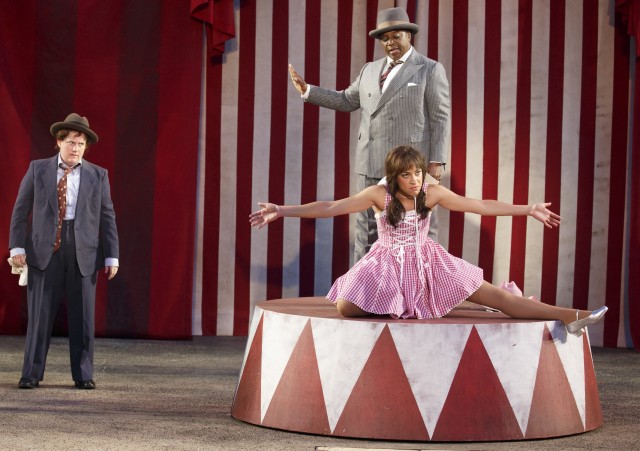
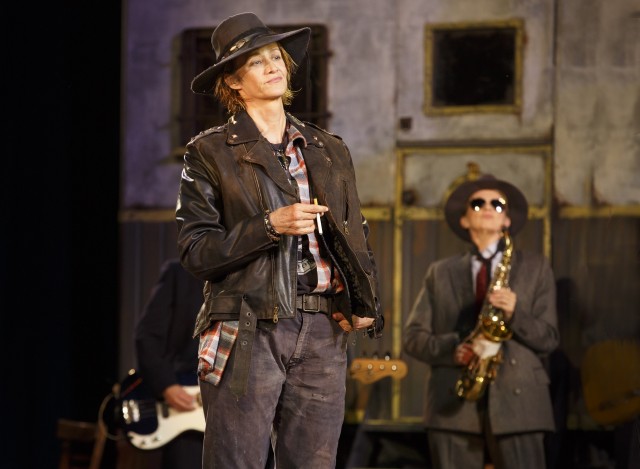
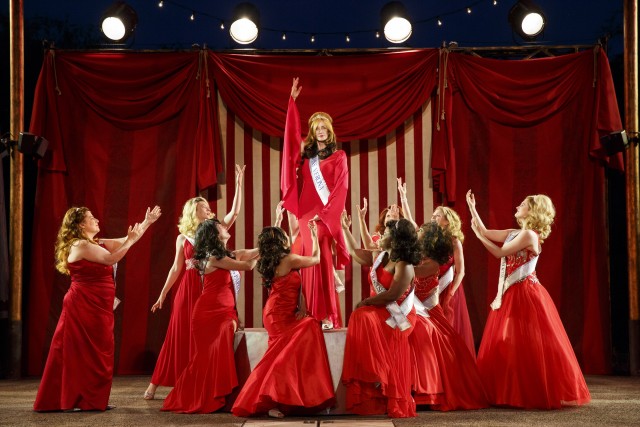





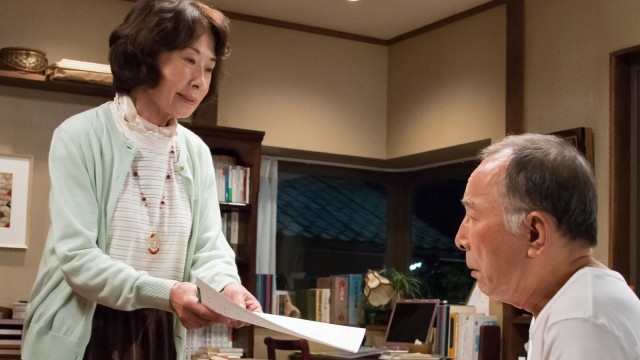
 For her birthday this year, Tomiko Hirata (Kazuko Yoshiyuki) wants something simple from her stubborn, not-very-thoughtful husband of fifty years, Shuzo (Isao Hashizume): a divorce. That shocking wish sends the entire Hirata clan into a frenzy in Yoji Yamada’s charmingly bittersweet What a Wonderful Family! The retired Shuzo doesn’t know what he’ll do without Tomiko, but he is not the kind of man to share his feelings; instead, he prefers to go to a local watering hole and flirt with the cute bartender, play golf, or take the dog, Toto, to the park. Their daughter, Shigeko (Tomoko Nakajima), is mad at her husband, Taizo Kanai (Shozo Hayashiya), for stretching the truth about one of his hobbies. Eldest son Konosuke (Masahiko Nishimura) tends not to get involved, even as his wife, Fumie (Yui Natsukawa), essentially runs the household and their children, Kenichi (Takanosuke Nakamura) and Nobusuke (Ayumu Maruyama), just run around. And youngest son Shota (Satoshi Tsumabuki) has a promising future that just might include his new girlfriend, Noriko Mamiya (Yu Aoi), although all of the divorce talk suddenly has him thinking twice.
For her birthday this year, Tomiko Hirata (Kazuko Yoshiyuki) wants something simple from her stubborn, not-very-thoughtful husband of fifty years, Shuzo (Isao Hashizume): a divorce. That shocking wish sends the entire Hirata clan into a frenzy in Yoji Yamada’s charmingly bittersweet What a Wonderful Family! The retired Shuzo doesn’t know what he’ll do without Tomiko, but he is not the kind of man to share his feelings; instead, he prefers to go to a local watering hole and flirt with the cute bartender, play golf, or take the dog, Toto, to the park. Their daughter, Shigeko (Tomoko Nakajima), is mad at her husband, Taizo Kanai (Shozo Hayashiya), for stretching the truth about one of his hobbies. Eldest son Konosuke (Masahiko Nishimura) tends not to get involved, even as his wife, Fumie (Yui Natsukawa), essentially runs the household and their children, Kenichi (Takanosuke Nakamura) and Nobusuke (Ayumu Maruyama), just run around. And youngest son Shota (Satoshi Tsumabuki) has a promising future that just might include his new girlfriend, Noriko Mamiya (Yu Aoi), although all of the divorce talk suddenly has him thinking twice.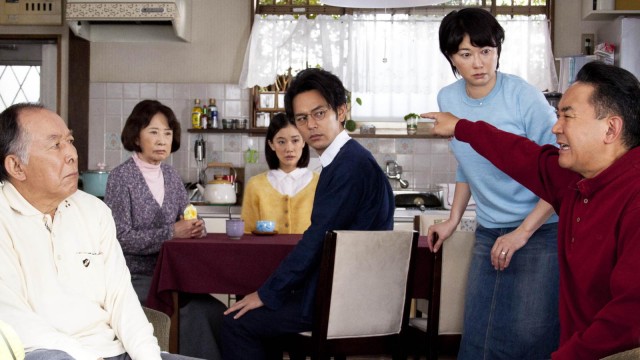

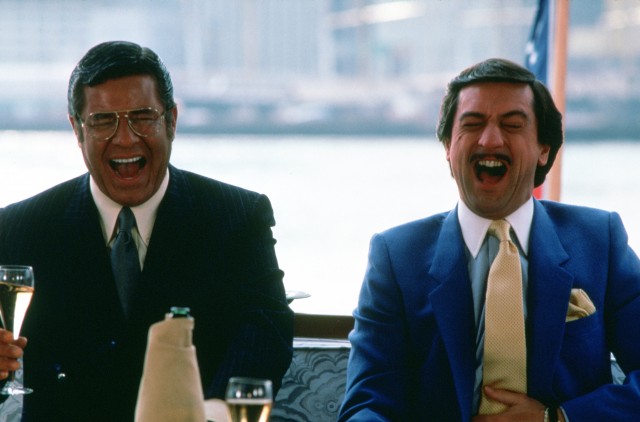
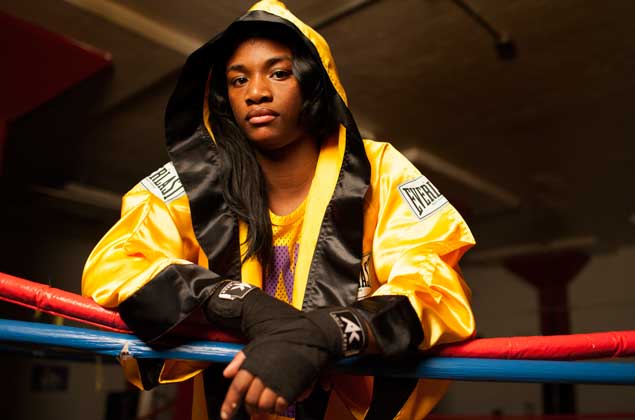
 Drea Cooper and Zackary Canepari’s debut feature documentary, T-Rex, is an exciting, dare we say hard-hitting look at a teenager attempting to literally fight her way out of depressed and troubled Flint, Michigan. When she was eleven years old, Claressa Shields walked into FWC Berston Gym and immediately showed the kind of skill, desire, and drive that made former professional boxer Jason Crutchfield take her under his wing as coach and mentor, thinking she had enormous potential. “A coach always wants a champion,” he says in the film. “Believe me. That’s why we coach. I just never thought it was going to be a girl.” Claressa trains every day, her sights set on becoming the first woman — actually, she’ll be a mere seventeen years old — to win a gold medal in the 2012 London Olympics, which has added the sport of women’s boxing to its wide-ranging roster of competitive sports. It’s not only a personal quest but a way to help get her poor, undereducated, broken family out of Flint. Her parents are divorced and each has a new partner, her father spent seven years in prison, and her tough-talking younger sister dreams of having ten babies. Allowing Cooper and Canepari full access, Claressa shows herself to be an exceptional boxer as well as a smart, intelligent person with a strong grasp of reality. She also has the confidence and swagger of Muhammad Ali; in fact, the relationship between the Greatest and his daughter, former world champion Laila Ali, serves as a major inspiration to her in her gritty, determined quest.
Drea Cooper and Zackary Canepari’s debut feature documentary, T-Rex, is an exciting, dare we say hard-hitting look at a teenager attempting to literally fight her way out of depressed and troubled Flint, Michigan. When she was eleven years old, Claressa Shields walked into FWC Berston Gym and immediately showed the kind of skill, desire, and drive that made former professional boxer Jason Crutchfield take her under his wing as coach and mentor, thinking she had enormous potential. “A coach always wants a champion,” he says in the film. “Believe me. That’s why we coach. I just never thought it was going to be a girl.” Claressa trains every day, her sights set on becoming the first woman — actually, she’ll be a mere seventeen years old — to win a gold medal in the 2012 London Olympics, which has added the sport of women’s boxing to its wide-ranging roster of competitive sports. It’s not only a personal quest but a way to help get her poor, undereducated, broken family out of Flint. Her parents are divorced and each has a new partner, her father spent seven years in prison, and her tough-talking younger sister dreams of having ten babies. Allowing Cooper and Canepari full access, Claressa shows herself to be an exceptional boxer as well as a smart, intelligent person with a strong grasp of reality. She also has the confidence and swagger of Muhammad Ali; in fact, the relationship between the Greatest and his daughter, former world champion Laila Ali, serves as a major inspiration to her in her gritty, determined quest.